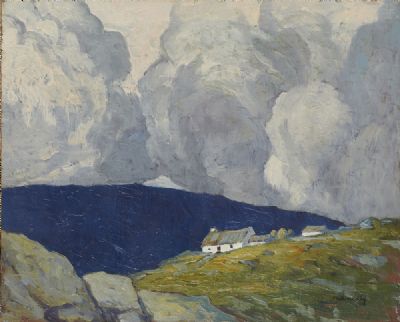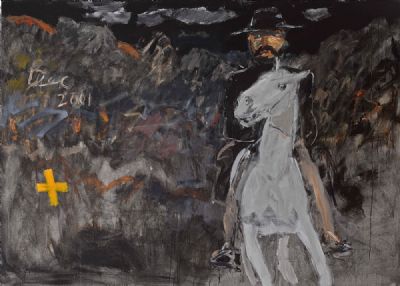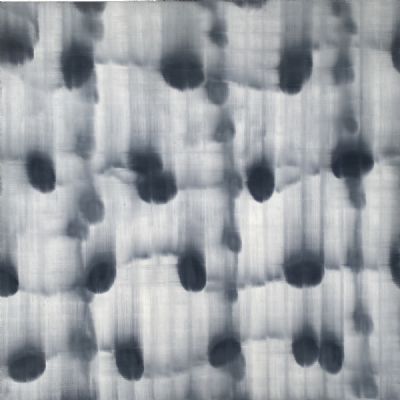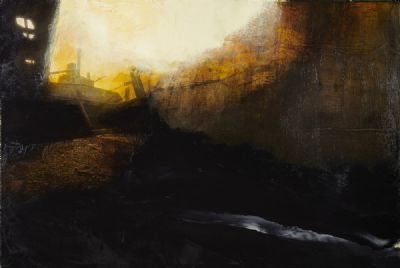Bidding on this item has ended.
Gerard Dillon
FORGIVE US OUR TRESSPASSES (CONFESSIONAL)
Lot 38
Price Realised:
€75,000
Estimate:
€40,000 - €60,000
Gerard Dillon RHA, RUA, 1916-1971
FORGIVE US OUR TRESSPASSES (CONFESSIONAL)
Oil on board, 20" x 25" (50.8 x 63.5cm), signed.
Provenance: The Dawson Gallery, Dublin (label verso); From the estate of an Irish collector
Born off the Falls Road i... Read more
 Lot 38
Gerard Dillon
FORGIVE US OUR TRESSPASSES (CONFESSIONAL)
Lot 38
Gerard Dillon
FORGIVE US OUR TRESSPASSES (CONFESSIONAL)
FORGIVE US OUR TRESSPASSES (CONFESSIONAL)
Oil on board, 20" x 25" (50.8 x 63.5cm), signed.
Provenance: The Dawson Gallery, Dublin (label verso); From the estate of an Irish collector
Born off the Falls Road i... Read more
 Lot 38
Gerard Dillon
FORGIVE US OUR TRESSPASSES (CONFESSIONAL)
Lot 38
Gerard Dillon
FORGIVE US OUR TRESSPASSES (CONFESSIONAL)
Estimate:
€40,000 - €60,000
Gerard Dillon RHA, RUA, 1916-1971
FORGIVE US OUR TRESSPASSES (CONFESSIONAL)
Oil on board, 20" x 25" (50.8 x 63.5cm), signed.
Provenance: The Dawson Gallery, Dublin (label verso); From the estate of an Irish collector
Born off the Falls Road in Belfast, Gerard Dillon was the eighth and youngest child of Annie and Joseph Henry Dillon. In the aftermath of social and political unrest in Northern Ireland in the first half of the twentieth century, working-class Catholic families formed their own ghettos in the city and were taught in schools run by the Catholic Church. Annie Dillon was a devout Catholic who insisted on fervent adherence to her beliefs which included daily rituals of devotional exercises and prayers. Benediction, confession, novenas, and reproductions of the Sacred Heart and the Virgin Mary were common place in Dillon's life. In adolescence however, Dillon abandoned his church following an experience in a confession box when he told a priest that he preferred boys to girls. In 1934, he sought the anonymity of London life where he was able to secretly explore his sexuality as he worked as a house painter. Years later, at the outbreak of war he found himself marooned in Ireland and decided to launch his painting career in 1941 with the encouragement of Mainie Jellett (1827-1944) who allowed him access to her studio to paint in preparation for his first solo exhibition in 1942.
This work is similar to other paintings, 'Father, Forgive them,' and 'I've a few drinks taken Father' (also known as 'The Confessional') where the title and subject centers on a religious ritual with a set of symbols. In 1950 Dillon explained in a letter to a friend that he changed the title of one of his paintings at the IELA exhibition, 'I've a few drinks taken, Father' to 'The Confessional' after receiving anonymous complaints of being critical of the Sacraments. In the context of this time, Irish Catholics were conditioned by circumstances and social values. John Charles McQuaid was Catholic Primate of Ireland and Archbishop of Dublin and his reputation for devotionalism and excessive puritanism encouraged men and women to engage in the practice of going to confession. James White stated Dillon's subject matter at this time was dependent on his everyday life and although Dillon was not religious his upbringing was ingrained in his psyche where politics, culture and religion shaped his outlook. Whether Dillon intentionally or unintentionally evoked messages in these subjects is open to interpretation but as a gay man he may have identified with other groups who were condemned in society.
In a confessional box a priest is partially hidden from view by a curtain with two kneeling penitents on either side of him. The emphasis on the physical space between the penitents in a queue in the foreground and the confessional is deliberate as is the positioning of a female figure in the far right corner whose head is downcast and has not yet joined the other penitents. A table of lit candles under a picture of the Blessed Virgin Mary symbolizes purity. The female figure adjacent to the Holy picture with a despondent expression prompts the question of her situation and may be a clue to the narrative. A male youth with fair hair expresses fear and dread as he gazes towards the priest. The penitents in the confessional and men and women in the line appear devout and pious in contrast to these two figures. A woman in the foreground in a dark shawl with her back to the viewer glances backwards observing the expressions and actions of the penitents. In close knit communities people were most likely aware of each other's circumstances. Contrition and prayer was deemed the solution for most sins but sex outside of wedlock went against the respectability of a family unit and was considered a grave sin.
A title of a painting, 'Forgive us our Trespasses' is listed in Gerard Dillon's first one- man show in 1942. James White illustrated a painting with the same title in his study of the painter, 'Gerard Dillon, an Illustrated Biography' (p. 25) stating that it was included in the painter's first one-man exhibition in 1942. One art critic reviewing the 1942 exhibition remarked that the 'artist's work varies between light, delicate watercolour and bold heavily outlined studies' ('Irish Press' 24/2/42). Another writer commented on a work with this title ' … the sight of people going to Confession and praying before and after Confession, the result is the touching little picture "Forgive Us Our Trespasses" (Irish Times, 24/2/42). These comments raise the possibility that Dillon exhibited a watercolour in 1942 and this oil on board was painted later. According to Gerard Dillon's records 'Forgive Us Our Trespasses' was included in a list of oil paintings with Dublin dealer Victor Waddington in 1947 which may have been returned to the painter. Leo Smith most likely simplified the title when it was sold at his Dawson street gallery after the artist's death in 1971. Researching the painter's life in the late 1980s, James White knew that two similar titles would create confusion and reverted back to the original title in his book (1994).
Karen Reihill, October 2021
FORGIVE US OUR TRESSPASSES (CONFESSIONAL)
Oil on board, 20" x 25" (50.8 x 63.5cm), signed.
Provenance: The Dawson Gallery, Dublin (label verso); From the estate of an Irish collector
Born off the Falls Road in Belfast, Gerard Dillon was the eighth and youngest child of Annie and Joseph Henry Dillon. In the aftermath of social and political unrest in Northern Ireland in the first half of the twentieth century, working-class Catholic families formed their own ghettos in the city and were taught in schools run by the Catholic Church. Annie Dillon was a devout Catholic who insisted on fervent adherence to her beliefs which included daily rituals of devotional exercises and prayers. Benediction, confession, novenas, and reproductions of the Sacred Heart and the Virgin Mary were common place in Dillon's life. In adolescence however, Dillon abandoned his church following an experience in a confession box when he told a priest that he preferred boys to girls. In 1934, he sought the anonymity of London life where he was able to secretly explore his sexuality as he worked as a house painter. Years later, at the outbreak of war he found himself marooned in Ireland and decided to launch his painting career in 1941 with the encouragement of Mainie Jellett (1827-1944) who allowed him access to her studio to paint in preparation for his first solo exhibition in 1942.
This work is similar to other paintings, 'Father, Forgive them,' and 'I've a few drinks taken Father' (also known as 'The Confessional') where the title and subject centers on a religious ritual with a set of symbols. In 1950 Dillon explained in a letter to a friend that he changed the title of one of his paintings at the IELA exhibition, 'I've a few drinks taken, Father' to 'The Confessional' after receiving anonymous complaints of being critical of the Sacraments. In the context of this time, Irish Catholics were conditioned by circumstances and social values. John Charles McQuaid was Catholic Primate of Ireland and Archbishop of Dublin and his reputation for devotionalism and excessive puritanism encouraged men and women to engage in the practice of going to confession. James White stated Dillon's subject matter at this time was dependent on his everyday life and although Dillon was not religious his upbringing was ingrained in his psyche where politics, culture and religion shaped his outlook. Whether Dillon intentionally or unintentionally evoked messages in these subjects is open to interpretation but as a gay man he may have identified with other groups who were condemned in society.
In a confessional box a priest is partially hidden from view by a curtain with two kneeling penitents on either side of him. The emphasis on the physical space between the penitents in a queue in the foreground and the confessional is deliberate as is the positioning of a female figure in the far right corner whose head is downcast and has not yet joined the other penitents. A table of lit candles under a picture of the Blessed Virgin Mary symbolizes purity. The female figure adjacent to the Holy picture with a despondent expression prompts the question of her situation and may be a clue to the narrative. A male youth with fair hair expresses fear and dread as he gazes towards the priest. The penitents in the confessional and men and women in the line appear devout and pious in contrast to these two figures. A woman in the foreground in a dark shawl with her back to the viewer glances backwards observing the expressions and actions of the penitents. In close knit communities people were most likely aware of each other's circumstances. Contrition and prayer was deemed the solution for most sins but sex outside of wedlock went against the respectability of a family unit and was considered a grave sin.
A title of a painting, 'Forgive us our Trespasses' is listed in Gerard Dillon's first one- man show in 1942. James White illustrated a painting with the same title in his study of the painter, 'Gerard Dillon, an Illustrated Biography' (p. 25) stating that it was included in the painter's first one-man exhibition in 1942. One art critic reviewing the 1942 exhibition remarked that the 'artist's work varies between light, delicate watercolour and bold heavily outlined studies' ('Irish Press' 24/2/42). Another writer commented on a work with this title ' … the sight of people going to Confession and praying before and after Confession, the result is the touching little picture "Forgive Us Our Trespasses" (Irish Times, 24/2/42). These comments raise the possibility that Dillon exhibited a watercolour in 1942 and this oil on board was painted later. According to Gerard Dillon's records 'Forgive Us Our Trespasses' was included in a list of oil paintings with Dublin dealer Victor Waddington in 1947 which may have been returned to the painter. Leo Smith most likely simplified the title when it was sold at his Dawson street gallery after the artist's death in 1971. Researching the painter's life in the late 1980s, James White knew that two similar titles would create confusion and reverted back to the original title in his book (1994).
Karen Reihill, October 2021
- Enquire
- View all lots by this artist
- How bidding works
Please note: You will require a deVeres account in order to bid. Please register via the website. Each lot will close numerically. If there is late bidding the time may be extended which could delay subsequent lots. The lots will start to close from 2.00pm on auction day, closing at 45 second intervals.
PLEASE BID EARLY TO AVOID DISAPPOINTMENT.
In order to allow rival bidders the opportunity to respond to a late bid the following extensions will apply:
IF A BID IS RECEIVED WITHIN THE FINAL 45 SECONDS OF THE COUNTDOWN THE CLOCK WILL RESET TO 60 SECONDS.
At any point you can leave a maximum bid, representing the highest price you are prepared to pay for a particular lot. Bidding only advances when there is competition from a rival bidder. In that case the system bids on your behalf, only up to the maximum if required. All bids are relayed to you be email, along with notification if you have been outbid.
All maximum bids are confidential and not disclosed. The system will endeavor to purchase the lot for you for the least price. Bids are subject to buyer’s premium of 25% (incl vat), with no additional charges.
In the event of a tied bid, the preference will be given to the bid submitted first. The second bidder will receive immediate notification of being outbid.
PLEASE BID EARLY TO AVOID DISAPPOINTMENT.
In order to allow rival bidders the opportunity to respond to a late bid the following extensions will apply:
IF A BID IS RECEIVED WITHIN THE FINAL 45 SECONDS OF THE COUNTDOWN THE CLOCK WILL RESET TO 60 SECONDS.
At any point you can leave a maximum bid, representing the highest price you are prepared to pay for a particular lot. Bidding only advances when there is competition from a rival bidder. In that case the system bids on your behalf, only up to the maximum if required. All bids are relayed to you be email, along with notification if you have been outbid.
All maximum bids are confidential and not disclosed. The system will endeavor to purchase the lot for you for the least price. Bids are subject to buyer’s premium of 25% (incl vat), with no additional charges.
In the event of a tied bid, the preference will be given to the bid submitted first. The second bidder will receive immediate notification of being outbid.
Sign-up to our auction alert
Signup for personalised Irish art recommendations, invitations to viewings and auctions, articles and more.



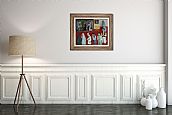


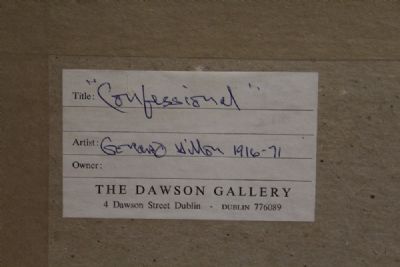
 View More Videos
View More Videos DVTV Click Here To View Video
DVTV Click Here To View Video